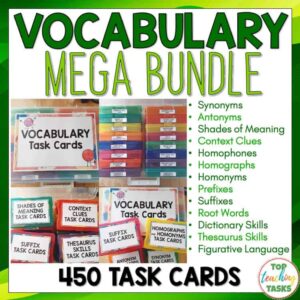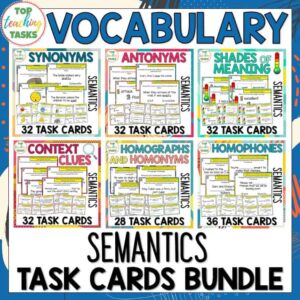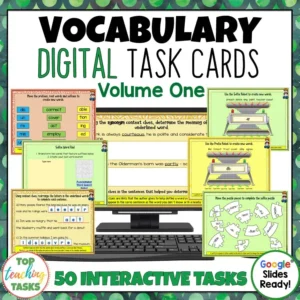Homophones Task Cards | Semantics Task Cards
NZ$4.00
Description
This colourful set of 36 Homophone Tasks Cards helps students to understand the meanings of words and how words function in sentences. Print and laminate these homophone task cards for regular use!
These semantics activities align with the Science of Reading (SoR) and are a practical addition to your structured literacy programme.
This set of 36 Homophone Tasks Cards features:
- The first 12 task cards require students to identify the correct homophone.
- The next 8 task cards require students to identify the correct homophone from to, two, or too.
- The next 8 task cards require students to identify the correct homophone from their, there, and they’re.
- The final 8 task cards require students to identify the correct homophone from your and you’re.
- Student recording sheet
- Answers
- Homophone definition poster
Why Teach Homophones and other aspects of Semantics?
The meanings of words and the relationships of words are referred to as semantics. A reader’s breadth and depth of vocabulary contribute to reading achievement.
- As the primary goals of reading and writing are determining and communicating meaning, it is important for students to understand the meanings of words and how words function in sentences.
- As the majority of words in English have multiple meanings or shades of meaning, it is necessary for the reader to be flexible in determining the author’s intended meaning of a word within a sentence.
- Semantics is one of the six evidence-based components of structured literacy.
- Semantics (language structures) is one of the strands of Scarborough’s Reading Rope, which looks at the elements that make a skilled reader.


























